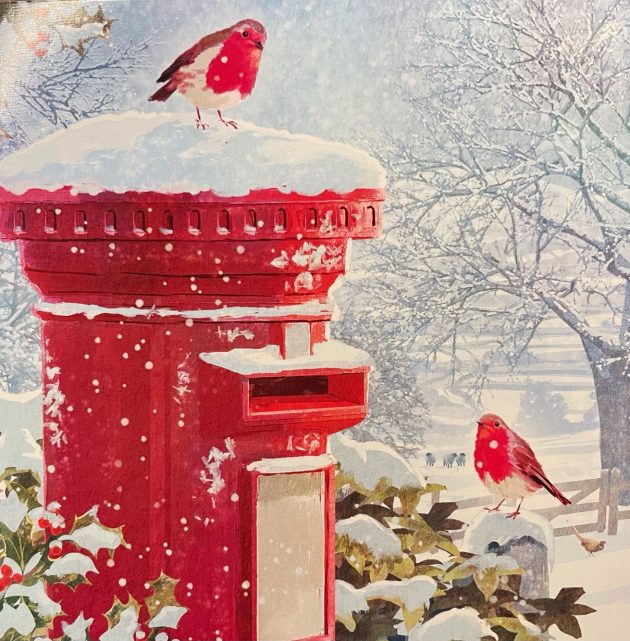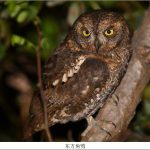
There are scores of birds around the world that have robin in their name – Australia has no fewer than 18 – but the original Robin, Erithacus rubella, isn’t related to any of them. It’s in a genus all of its own. The name is a diminutive of Robert, and was once commonly used as an affectionate nickname for people called Robert. Here in the UK it’s the name we use for what is one of our most familiar birds, but curiously it’s not one with a long history, as the Robin was formerly known as the Redbreast. Look in any of the old bird book and you find no mention of Robin. The British Ornithologists’ Union formally accepted Robin as an alternative to Redbreast as recently as 1952.

Today you never hear anyone use the name Redbreast, though this is, of course, the Robin’s most obvious feature. I’m surprised that we have been allowed to keep the name Robin, and it hasn’t been renamed the Red-chested Garden Chat, or something similar. It is one of the few birds that most British people can both recognise and name, while it has long had a close association with Christmas.

Why it should be so closely associated with Christmas is a bit of a mystery. The first British postmen wore red coats, and as a result were given the nickname of robin or redbreast, so this is the most obvious connection. There is no mention of the species in the Bible, while Robins don’t occur in the Holy Land, but they did appear on Victorian Christmas cards, representing the postman. Today they still feature on many cards, usually perched in snow.

A typical Christmas-card scene: snow, Robins, and a red post box. The artist, Pip Wilson, has managed to slip a cock Pheasant into the wintry landscape
It’s impossible for us humans to tell the sexes apart visually, though fortunately the birds themselves seem to have no problems. Young Robins are spotty and don’t have red breasts, but they acquire the red feathers after their first moult, which can be up to two months after leaving the nest. Each Robin has a unique breast pattern, and can (with difficulty) be recognised individually

Male and female Robins hold their own territories in the winter, and both sexes sing a similar winter song. They defend their territories fiercely from other Robins, sometimes fighting to the death. They not infrequently sing at night, usually under artificial lights, and this has often led to them being mistaken for Nightingales. The so-called winter song can be heard as early as July, and is usually described as sounding rather sad, suppressed or even introverted. At the end of the year the cocks start performing their full-blooded spring song, a sure sign of the changing season.

They are short-lived: the record for longevity is held by a ringed bird that survived until it was over eight. Ringing recoveries of British-ringed birds have shown that the most frequent cause of death is being killed by a cat. They have been protected in Britain for many years, but are still caught and eaten in some European countries, including Italy. At the end of the Victorian era they were trapped in Britain so that their skins could adorn ladies’ hats, but that fashion eventually passed.

Thanks to ringing we know that British Robins seldom move far from where they hatched, but the birds that breed in the forests of Scandinavia migrate to the Mediterranean for the winter. Some of these birds will pass through eastern Britain on their way south, but it’s thought that few remain here for the winter. The problem for these migrants is that our resident (unfriendly) robins already hold all the best territories, so the northern birds have to continue much farther south to establish territories where there are no resident robins.

While our Robins are famously tame and approachable, Continental Robins tend to be shy. A wildlife photographer friend of mine finds that Finnish photographers, visiting Britain, love to photograph Robins here, as their birds are so much more difficult to photograph satisfactorily.

Many attempts have been made to introduce robins to America, Australia and New Zealand. All have failed. The scores of birds around the world with the name robin have all acquired their name because of a physical resemblance to Erithacus rubella, but few are even distantly related to our bird. The Australian robins, despite being similar in shape and size to our bird, are really flycatchers. The North American Robin is a thrush, but was the closest bird the early settlers could find to their familiar Robin from home.

Robins feed mainly on insects and other arthropods such as spiders and worms, but they are highly omnivorous, and readily take seeds and berries. However, given a choice of any food, most Robins like mealworms best of all, and providing mealworms is the simplest way to make a garden Robin hand tame.












Lifelong dream: a hand-tame robin. Very seasonal post, love it! Best enjoyed with some mincemeat.
Thanks! I had wondered why the various robins seemed to have no connection!